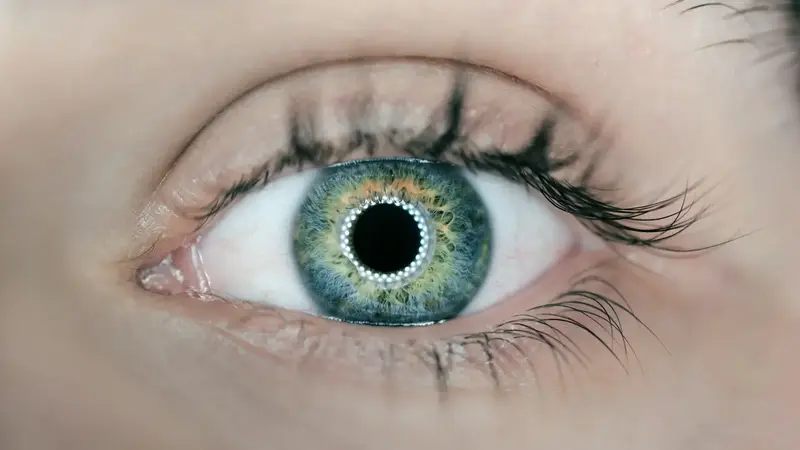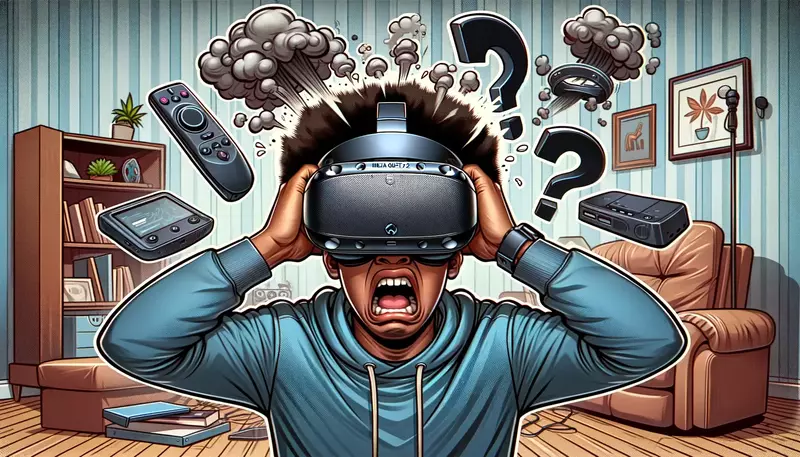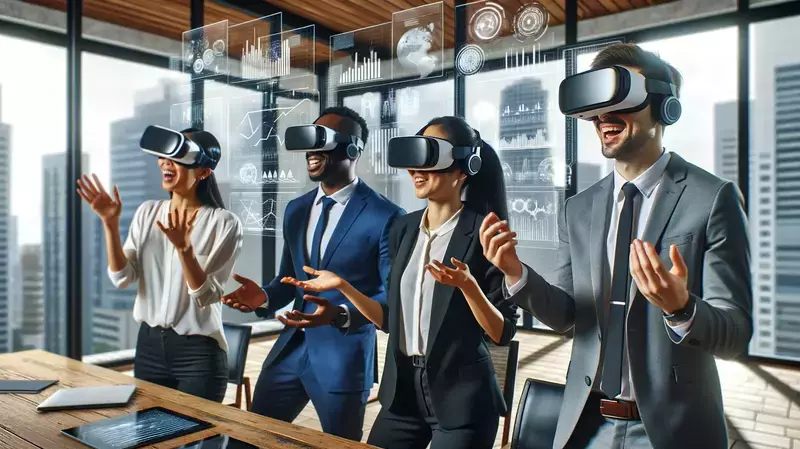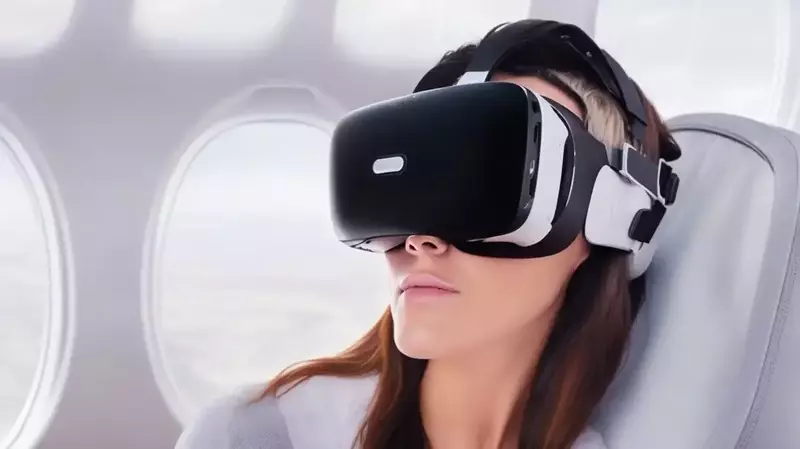This site contains affiliate links to products, and we may receive a commission for purchases made through these links.
This advanced technology aims to revolutionize virtual and augmented reality experiences by mimicking the human visual system.
By utilizing eye-tracking technology and prioritizing central fields of view for higher quality visuals, foveated rendering seeks to revolutionize the virtual and augmented reality experiences while conserving resources.
Focusing on prioritizing central fields of view for higher quality visuals, foveated rendering employs techniques such as fixed and dynamic methods, with eye-tracking technology playing a crucial role.
As you continue reading, you’ll discover not only how the gaming industry embraces these advancements but also their applications in the exploration and education sectors.
Dive deeper into understanding what is the main concept behind foveated rendering and its future potential that promises to redefine our interaction with digital worlds.

Foveated Rendering and Human Vision
This technique takes inspiration from how our eyes are most sensitive at their center (the fovea) with acuity decreasing towards the periphery.
Mimicking Human Visual Perception to Save Resources
Our eyes have a small region called the fovea, which contains densely packed cones responsible for sharp central vision. The density of these photoreceptor cells decreases as we move away from this central point, resulting in lower resolution peripheral vision.
Foveated rendering leverages this natural characteristic of human vision by focusing on delivering high-resolution graphics only where they matter most – right at the center of our gaze.
By utilizing this technique, the processing power necessary to generate intricate virtual surroundings is greatly reduced without sacrificing user experience quality.
In fact, studies show that users typically do not notice any difference between full-resolution and foveated-rendered images due to how well this technique aligns with our innate visual system (source).
Prioritizing Central Fields of View for Higher Quality Visuals
- Selective Resolution: Foveated rendering algorithms selectively allocate more resources towards generating higher quality visuals within a user’s direct line-of-sight while downgrading image fidelity in peripheral regions where it matters less.
- Better Performance: This selective approach to rendering allows for more efficient use of computational resources, leading to better performance in virtual reality applications without sacrificing visual quality.
- Adaptive Experience: Foveated rendering techniques can be adapted based on the user’s current gaze direction and other factors such as display resolution or hardware capabilities, ensuring an optimal experience tailored specifically for each individual.
In essence, foveated rendering is a powerful technique that enables developers to create visually stunning virtual reality experiences while maintaining smooth performance by leveraging our natural visual system.
This innovative approach has already begun revolutionizing how we interact with digital environments across various industries like gaming, exploration, and education.
Foveated rendering is a powerful technique that utilizes human vision to improve the quality of virtual reality experiences, while saving resources.
By utilizing eye tracking technology and implementing both fixed and dynamic foveation methods, developers can further enhance their VR applications with improved visuals.
Foveated rendering mimics human visual perception by prioritizing high-quality visuals in the center field of vision while reducing computational costs for peripheral areas. This technique leverages our natural visual system, resulting in better performance and an adaptive experience tailored to each individual user. It has already begun revolutionizing how we interact with digital environments across various industries like gaming, exploration, and education.
Techniques in Foveated Rendering
This technique takes inspiration from how our eyes are most sensitive at their center (the fovea) with acuity decreasing towards the periphery.
There are two primary techniques used within foveated rendering – fixed and dynamic.
Fixed vs. Dynamic Foveation Methods
| Factor | Fixed Foveation | Dynamic Foveation |
|---|---|---|
| Focus area | Predetermined area | Monitors users’ gaze location in real-time |
| Rendering graphics | Full resolution in focal point, lowered quality elsewhere | Only high-resolution graphics where needed most based on user’s focus points |
| Resource management | Less efficient as it doesn’t account for users’ eye movements | More efficient as it adapts to each individual’s viewing patterns |
| User-specific optimization | Assumes a one-size-fits-all approach | Caters specifically to each user’s needs based on natural eye movement tendencies |
| Response times | Slower as it doesn’t adjust in real-time | Faster as it adjusts in real-time based on gaze location |
Fixed foveation focuses on a predetermined area, typically the central region of an image, where it renders graphics at full resolution while lowering quality around this focal point.
Although it can save resources compared to traditional methods, fixed systems do not account for users’ eye movements or changes in gaze direction during use.
In contrast, dynamic foveation leverages eye-tracking technology, which monitors users’ gaze location in real-time and adjusts rendered images accordingly.
By only providing high-resolution graphics where they are needed most based on the user’s current focus points, dynamic systems offer improved performance over fixed methods without sacrificing overall visual quality.
- Better resource management: Dynamic systems allocate processing power more efficiently than static ones because they adapt to each individual’s unique viewing patterns.
- User-specific optimization: Since every person has different natural eye movement tendencies, dynamic solutions cater specifically to each user’s needs rather than assuming a one-size-fits-all approach as seen with fixed methods.
- Faster response times: As dynamic foveation adjusts in real-time based on gaze location, it can quickly respond to changes in user focus and ensure optimal image quality at all times.
Eye Tracking Technology as a Key Component
For dynamic foveated rendering to function effectively, accurate eye tracking technology is crucial. This involves using cameras or sensors within virtual reality headsets that monitor users’ eye movements and determine where they are looking at any given moment.
By collecting this data, the system can make informed decisions about which areas of an image should receive high-resolution graphics versus those that can be rendered with lower fidelity without compromising the overall experience.
In addition to enhancing foveated rendering systems, eye tracking has numerous other applications within virtual reality environments such as improving user interaction capabilities or providing valuable insights into human behavior for research purposes.
Foveated rendering is a revolutionary approach that has the potential to completely transform virtual reality, and eye tracking tech is essential for its success.
As such, understanding how foveated rendering works can help us explore more of its applications and future potential.
Foveated rendering is a technique that mimics human visual perception by prioritizing high-quality visuals in the center field of vision while reducing computational costs for peripheral areas. It can be achieved through fixed or dynamic foveation methods, with dynamic systems offering better resource management, user-specific optimization, and faster response times due to their ability to adapt to each individual’s unique viewing patterns using eye-tracking technology. Accurate eye tracking technology is crucial for effective implementation of dynamic foveated rendering.
Applications and Future Potential of Foveated Rendering
As this technology continues to develop, researchers explore various application areas where it can be used today, such as gaming, exploration, and educational benefiting from reduced computational costs while still providing immersive experiences for users.
Despite being relatively young with open research problems yet to be fully addressed, it holds great promise for improving virtual reality experiences across diverse platforms without sacrificing performance capabilities essential for smooth operation.
Gaming Industry Embracing Foveated Rendering Advancements
One of the most prominent industries taking advantage of foveated rendering is gaming.
Game creators are continually searching for methods to enhance graphics and performance on both PC and console platforms.
By implementing foveated rendering techniques into their games, they can provide players with a more realistic experience without overloading hardware resources.
For example, NVIDIA has been working on developing foveation technologies that could significantly impact how future games are designed and played.
- Better Graphics: With foveation applied during game development processes, gamers can enjoy improved visual fidelity in central fields of view—where they’re most likely paying attention—without compromising overall performance levels.
- Faster Frame Rates: Reduced computational demands resulting from selectively applying higher-resolution textures within focused regions allow smoother gameplay even when running demanding titles at maximum settings or resolutions.
- Potential VR Integration: As virtual reality becomes increasingly popular among gamers worldwide thanks in part to advancements like foveated rendering, developers may find new ways of incorporating this technology into their VR titles for even more immersive experiences.
Exploration and Educational Applications
Beyond gaming, foveated rendering has potential applications in exploration and education.
In virtual reality simulations designed for training or educational purposes, the use of foveation can help maintain high-quality visuals where they matter most.
This can be done while conserving computational resources that could be better allocated elsewhere within these complex environments.
- Medical Training: Foveated rendering can be used in medical training simulations to provide realistic visualizations without straining system performance. This allows trainees to focus on essential details during procedures while still experiencing a smooth simulation experience.
- Astronomy Visualization: By implementing foveation techniques within astronomy software programs such as WorldWide Telescope, users can explore outer space with stunning detail and clarity without overburdening their computers’ processing capabilities.
- Museum Exhibits: Virtual museum tours employing foveated rendering technologies offer visitors an engaging way to learn about history, art, or science through interactive exhibits presented at optimal levels of visual quality based on each user’s individual gaze patterns.
In conclusion, foveated rendering is a promising technology that has the potential to revolutionize the virtual reality and augmented reality industries.
By mimicking the human visual system, it can provide high-resolution visuals where they matter most, improving the user experience while reducing computational costs.
As the technology continues to develop, we can expect to see more applications and advancements that will further enhance our virtual experiences.
Foveated rendering is a technology that mimics human visual perception by prioritizing high-quality visuals in the center field of vision while reducing computational costs for peripheral areas. It has potential applications in gaming, exploration, and education industries, offering improved graphics quality and performance with reduced computational demands. The gaming industry is already embracing foveated rendering advancements to provide players with more realistic experiences without overloading hardware resources.
FAQ
What is the Main Concept Behind Foveated Rendering in VR
The main concept behind foveated rendering is to optimize virtual reality (VR) graphics by focusing on the user’s gaze and reducing image quality in peripheral vision. This mimics the human visual system, where high-resolution focus occurs at the center of our vision (fovea), while peripheral areas have lower resolution.
Why is foveated rendering important?
Foveated rendering is essential because it significantly reduces computational load and power consumption for VR devices. By optimizing graphics based on a user’s gaze, it allows for higher-quality visuals without requiring excessive hardware resources, making VR experiences more accessible and efficient.
What are the techniques used in foveated rendering?
There are two primary techniques: fixed and dynamic foveated rendering. Fixed uses predefined regions with varying resolutions, while dynamic adjusts these regions based on real-time eye-tracking data. Dynamic offers better optimization as it adapts to individual users’ gaze patterns.
How effective is foveated rendering?
Foveated rendering effectively reduces GPU workload by up to 50% or more depending on implementation quality. It enables smoother frame rates, improved battery life, and potentially lowers device costs due to reduced hardware requirements—all without compromising perceived visual quality during VR experiences.
How will foveated rendering likely affect the next generation of headsets?
With advancements in eye-tracking technology, future headsets may widely adopt dynamic foveation methods—resulting in lighter-weight devices with longer battery life and increased affordability. Foveation can also facilitate higher display resolutions for enhanced immersion within virtual environments. [source]
!! For more information about the different VR headsets on the market, check out this product specification list.
Final Thoughts
Foveated rendering is a technique that mimics human visual perception to save resources and prioritize central fields of view for higher quality visuals. Eye tracking technology plays a key role in this process, allowing for fixed or dynamic foveation methods.
The gaming industry has already embraced advancements in foveated rendering, but there are also potential applications in exploration and education. As we move forward, this area is sure to bring about more thrilling breakthroughs.
If you’re interested in learning more about cutting-edge technologies like foveated rendering, visit Pursuit Meta today!

Espen
Espen is the Director of PursuitMeta and has written extensively about Virtual Reality and VR Headsets for years. He is a consumer product expert and has personally tested VR Headsets for the last decade.




Leave a Reply